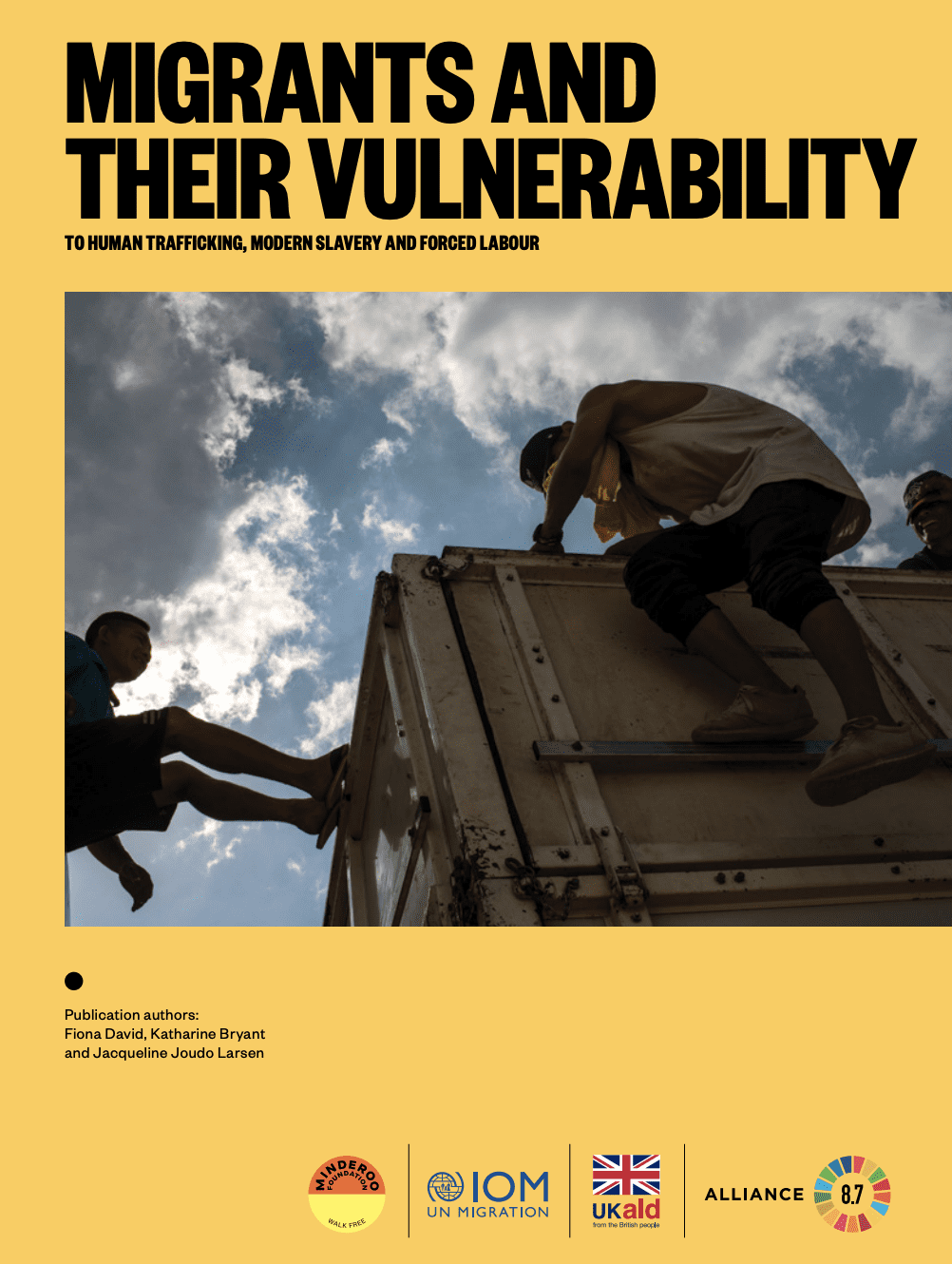
Migrants and their Vulnerability: to human trafficking, modern slavery and forced labour
Executive Summary
Research suggests connections exist between migration and criminal forms of exploitation such as human trafficking, forced labour and modern slavery. Certainly, constellations of risk are seen in certain migrant communities and migration corridors. However, it is not known how many of the world’s estimated 40 million victims of modern slavery are also migrants.
Modern slavery, while not defined in law, serves as an umbrella term that emphasizes the commonalities between human trafficking, forced labour and slavery. Essentially, these are all situations of exploitation in which a person cannot refuse or leave an exploitative situation due to threats, violence, coercion, deception or abuse of power.1 If we are to understand the relationship between migration and modern slavery, it is important that we know more about which migrants are vulnerable to modern slavery, as well as when and in what enabling circumstances.
The global community has pledged, through the Sustainable Development Goals (SDGs), to address global challenges to achieve a better and more sustainable future for all. SDG 8.7 aims to eradicate modern slavery, trafficking, forced labour and the worst forms of child labour by 2030, and to end child labour by 2025. Alliance 8.7 is a multi-stakeholder partnership committed to achieving Target 8.7 through coordination, strengthening research, data, and knowledge management and sharing.
Also covered by the SDGs is migration, most notably under SDG 10.7, which aims to facilitate orderly, safe, and responsible migration and mobility of people, including through implementation of planned and well-managed migration policies. In addition, the Global Compact for Safe, Orderly and Regular Migration seeks to embody the first intergovernmental agreement on international migration under the auspices of the United Nations.
The Global Compact emphasizes the need to address and reduce the vulnerabilities in migration and, through its Objective 10, calls on the international community to “prevent and combat trafficking in persons in the context of international migration.”2
Recognizing the importance of addressing modern slavery and specific vulnerabilities of migrants to modern slavery, this report has been prepared for the Alliance 8.7 Action Group on Migration to help to inform the activities of the group aimed at achieving SDG 8.7. The report examines the recent research literature on migration and modern slavery (published between 2014-2018) through a crime prevention lens, to identify a set of salient features that will help us better understand the relevant connections between migration and vulnerability to trafficking, forced labour, child labour, and modern slavery.
Read more here.
